learn how
Ancient Techniques - Ceramics - Construction
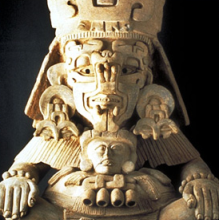
Ancient American pottery was made by hand, using a variety of techniques that can be classified as modelling, coiling, slab-work or moulding. Many ceramic objects were made using a combination of hand-building techniques.
This large, expertly made Zapotec sculpture of a seated figure, dated A.D. 500-750, is complete with mask, ear plugs, necklace and bracelets. The powerful figure clearly displays the results of coiling, modelling, slab-work and the use of moulds. Sometimes the method of construction is not so apparent to the eye and experts use x-rays to determine the method of manufacture.
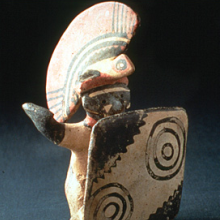
Modelling is a technique that involves shaping by hand or with a tool, subtracting or adding clay to achieve the desired effect. Added parts can be attached with slip, or clay thinned with water to the consistency of cream. All of this is done while the clay is still malleable and before drying or firing the object. Modelled details are often added to pieces that were mainly made using other methods.
This small figure from the Nayarit region of West Mexico combines modelling of its figure, weapon and headdress with a slab-built shield. Despite its small size, the figure displays convincing movement and power.
G83.1.50
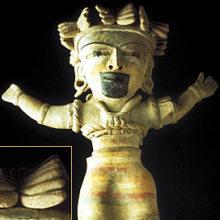
Coiling is a technique using round, snake-like strips of clay, wound around on top of one another to form cylinders, bowls or other hollow shapes. The coiled walls are smoothed with fingers or tools. Coiling was utilized for making useful wares and large figural pieces.
This large and striking figure of a dancer, c. A.D. 600-900, illustrates the use of coils to build up the torso and the hollow arms and legs. As well, the elements of the butterfly headdress are made of simple coils.
G83.1.69
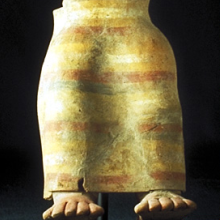
Slab-work involves rolling out or otherwise forming flat sheets of clay that can then be joined to make various shapes. Box shapes or very large ceramic objects can be formed this way.
Flat slabs of clay can be textured with rollers, stamps or tools to suggest the patterns of woven textiles. Where textiles from the past have not been preserved or discovered, ceramic figures with elements of attire provide a rich source of information for study.
The long, form-fitting skirt worn by this Veracruz figure (A.D. 600-900) was made by placing a soft clay slab over its hollow torso and legs.
G83.1.69
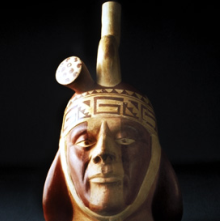
Many identical images can be made quickly by using a mould. The moulds themselves were made from wood or clay, in one or two parts, and were used to make figures, faces, or details of sculptures. In some instances moulds were used even when quantities of an image were not planned, for instance with Moche portrait vases. Moulds appeared early.
The moulds used were press-moulds or hump-moulds. Slabs or pieces of clay are pressed into press moulds to obtain reverse images. Slabs of clay are draped over hump-moulds to achieve simple smooth and rounded shapes for bowls or platters.